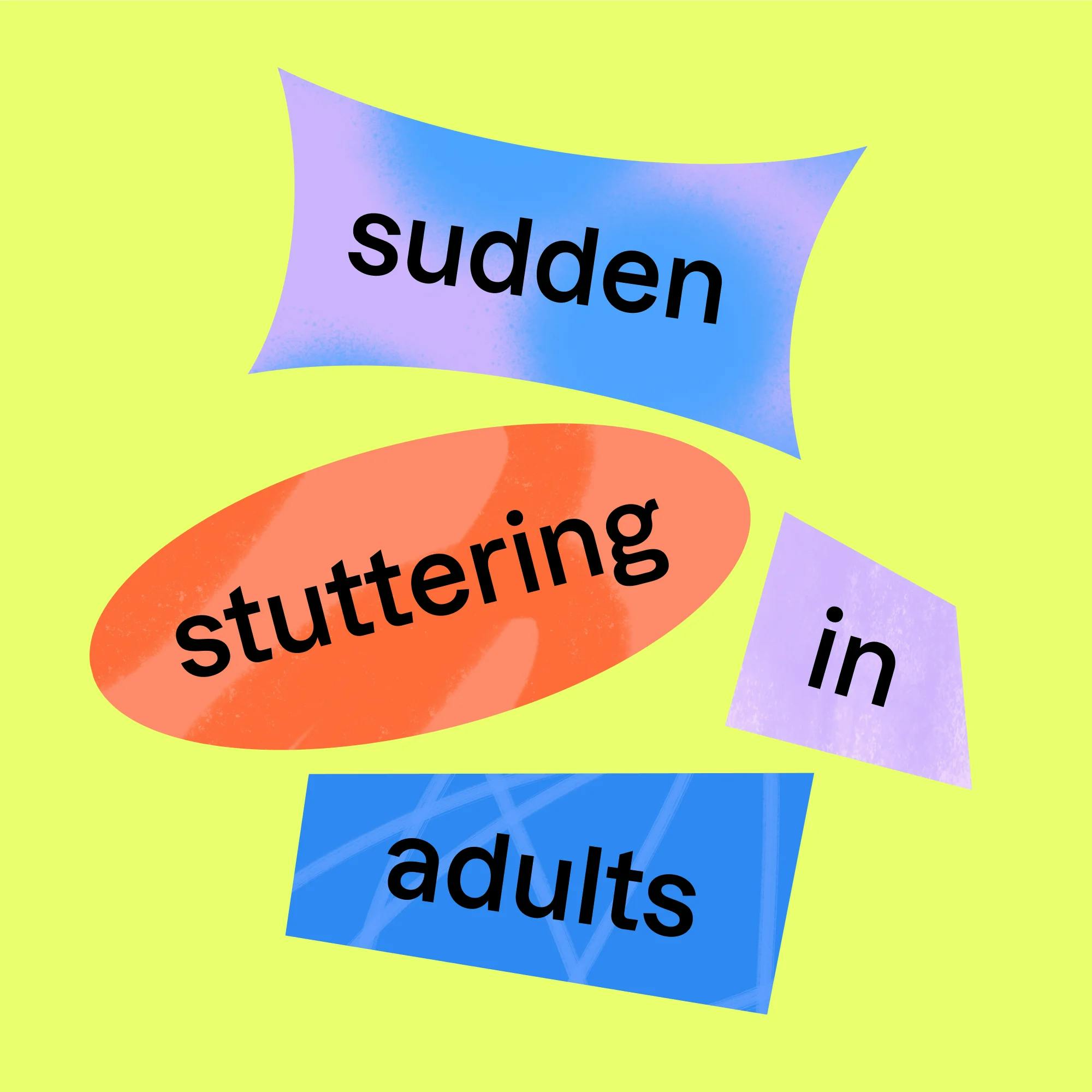This article is a guide to Wernicke’s aphasia. It will help you learn what aphasia is, the main symptoms of Wernicke’s aphasia, and how Wernicke’s aphasia is treated. You’ll also learn 10 helpful tips for communicating with a person who has aphasia.
What is aphasia?
First, it’s helpful to understand what aphasia is. Aphasia is a complex neurological condition that affects a person's ability to understand and express language. It often results from brain damage, typically occurring in the left hemisphere, which is responsible for language processing in most right-handed individuals. This damage can be caused by injuries such as stroke, a physical trauma to the brain, or a tumor.
There are several types of aphasia, each with distinct characteristics. Aphasia can be categorized through an evaluation with a speech-language pathologist.
Rather than being a specific condition, aphasia can affect a person’s language function in different ways. People with aphasia may have varying degrees of difficulty with speaking, listening, reading, and writing. The four primary areas of language where people with aphasia may have problems are:
1 Speech repetition
Repeating words, phrases, and sentences that someone else says
2 Naming
Being able to name objects
3 Auditory comprehension
Understanding words, phrases, or sentences that are spoken by another person
4 Fluency
The smoothness, rhythm, and rate with which a person speaks
Every brain is different. While we can make fairly reliable statements about the parts of the brain and the areas they control, there is variation. But one thing is certain, speech therapy will make a big difference in recovery for every type of aphasia, including Wernicke’s aphasia.


What is Wernicke’s aphasia?
Wernicke refers to the area of the brain that controls language comprehension and expression. It is located in the temporal lobe on the left side of the brain.
A person who experiences trauma to this area of the brain may have difficulty understanding and recognizing words that are spoken and written. They will produce sounds and words that are not accurate or meaningful. The assessment profile of a person with Broca’s aphasia usually closely resembles the following:
Speech repetition: Mild-severe problems
Naming: Mild-severe problems
Auditory comprehension: Poor
Fluency: Fluent
What does Wernicke’s aphasia sound like?
Wernicke’s aphasia is often called “receptive” or “fluent” aphasia. The main symptom of Wernicke’s aphasia is that it impacts the ability to express ideas in a meaningful way.
The person may produce sentences that are fluent and composed of accurate grammar. However, some words will be irrelevant, contain incorrect sounds, or not even be words at all (also known as neologisms). For example, a person with Wernicke’s aphasia may describe an outing by saying something like, “You know that smake pintered and that I want to get him round to take him again.”
Expert support for aphasia
Speech therapy helps people with aphasia express themselves and connect with others. Our therapists work with you from the comfort of home.
 Get started
Get startedWhat are other symptoms of Wernicke’s aphasia?
When a person with Wernicke’s aphasia writes, their written language will appear the same as their spoken language, with letter substitutions and incorrect words.
Frequently, Wernicke’s aphasia affects how well the person understands language. They may have a hard time understanding both spoken and written words and questions. This makes it difficult for the person to respond accurately and meaningfully.
People with Wernicke’s aphasia may be frustrated by their listener’s inability to understand what they say. Speech therapy will usually begin with addressing comprehension and teaching compensatory strategies to reduce the person’s frustration.


How is Wernicke’s aphasia treated?
Communication is incredibly complex. Speech therapy can help a person with Wernicke’s aphasia in two ways:
1 Impairment-based treatment
This treatment aims to improve language function and restore it to its previous level. Examples of treatment approaches include graded comprehension tasks, oral reading for language in aphasia, and melodic intonation therapy.
2 Communication-based treatment
The goal of this type of treatment is to provide the person with some sort of communication abilities in order to improve their quality of life or reduce their frustration. Examples of treatment approaches include conversational coaching, supported conversation, and promoting aphasic’s communication effectiveness (PACE).
It’s important to note that a combination of these treatment types may be used. Because of the extensive variation in brain function and damage, Wernicke’s aphasia can have varying degrees of severity. One treatment program may be useful for one person, while another program may lead to better outcomes with another.
In addition, a person may begin with one type of treatment and, as they improve, change to another program. Your speech therapist will work with you to determine the specific type that will best support your communication needs.


10 tips for communicating with a person who has Wernicke’s aphasia
As we’ve explained, aphasia varies in its severity. However, a person’s sense of self can be greatly impacted when they have aphasia. Some people have severe aphasia, but they continue attempting to engage with others. Other people may have mild word-finding problems, but they are much less comfortable socializing than they were before.
It’s important to support a person with aphasia by maintaining a sense of respect. Language alone has been affected, not intelligence.
It’s important to support a person with aphasia by maintaining a sense of respect. We need to recognize that language alone has been impacted, not the person’s intelligence level. Here are 10 simple ways to increase success when communicating with a person who has aphasia.
1. Check in and confirm they understand by asking them “yes” or “no” questions.
2. Encourage the person to communicate; try to avoid talking for them.
3. Use a normal volume when speaking unless the person asks you to speak more loudly or quietly.
4. Pause and allow the person time to speak. Do not finish their sentences.
5. Limit any background noise to promote a calm and quiet environment.
Pause and allow the person time to speak. Do not finish their sentences.
6. Ensure the person is paying attention to you when you’re talking to them.
7. Do not correct the way they pronounce words. Keep a pleasant facial expression while listening to the person speak.
8. Take advantage of alternate ways to communicate, such as pictures, written words, gestures, and facial expressions.
9. Use a simple form of communication. This doesn’t mean speaking about simple, child-like things, but using the least complex words and sentences when discussing information.
10. Encourage participation in group conversations. Shift the topic to the person with aphasia: “Dave, what do you think about that game?”
Online speech therapy for people with aphasia
Support from family, friends, and a speech therapist can significantly improve a person's ability to navigate daily interactions and regain confidence in their communication. At Expressable, our speech therapists are knowledgeable in all types of treatment programs. We will work with you to establish a plan of care that gets you back to communicating to your top potential.
Online speech therapy is a convenient treatment option for many people with aphasia. In fact, research shows that online speech therapy is effective and reliable for adults with aphasia. Caregivers and family members are encouraged to join sessions as well. Find the right speech therapist for your needs here. We'll answer your questions and help you decide on next steps.
How Expressable Can Help
Concerned your child isn't reaching age-expected milestones? Looking for communication support from a professional? Expressable is a national online speech therapy practice serving children and adults. We treat all major areas of communication and feeding, offer flexible hours including evenings and weekends, and accept most major health insurance plans. We’re proud to have earned more than 3,000 5-star reviews from our clients (4.9/5 average).
Our therapy model is centered on parent and caregiver involvement. Research proves that empowering caregivers to participate in their loved one’s therapy leads to better outcomes. That’s why we combine live, 1-on-1 speech therapy with personalized education and home practice activities for faster progress.
Communication is more than words. It’s how we share how we feel and show who we are. We’re here to help you or your child do just that.
 Laura Thorburn, M.S., CCC-SLP
Laura Thorburn, M.S., CCC-SLP













